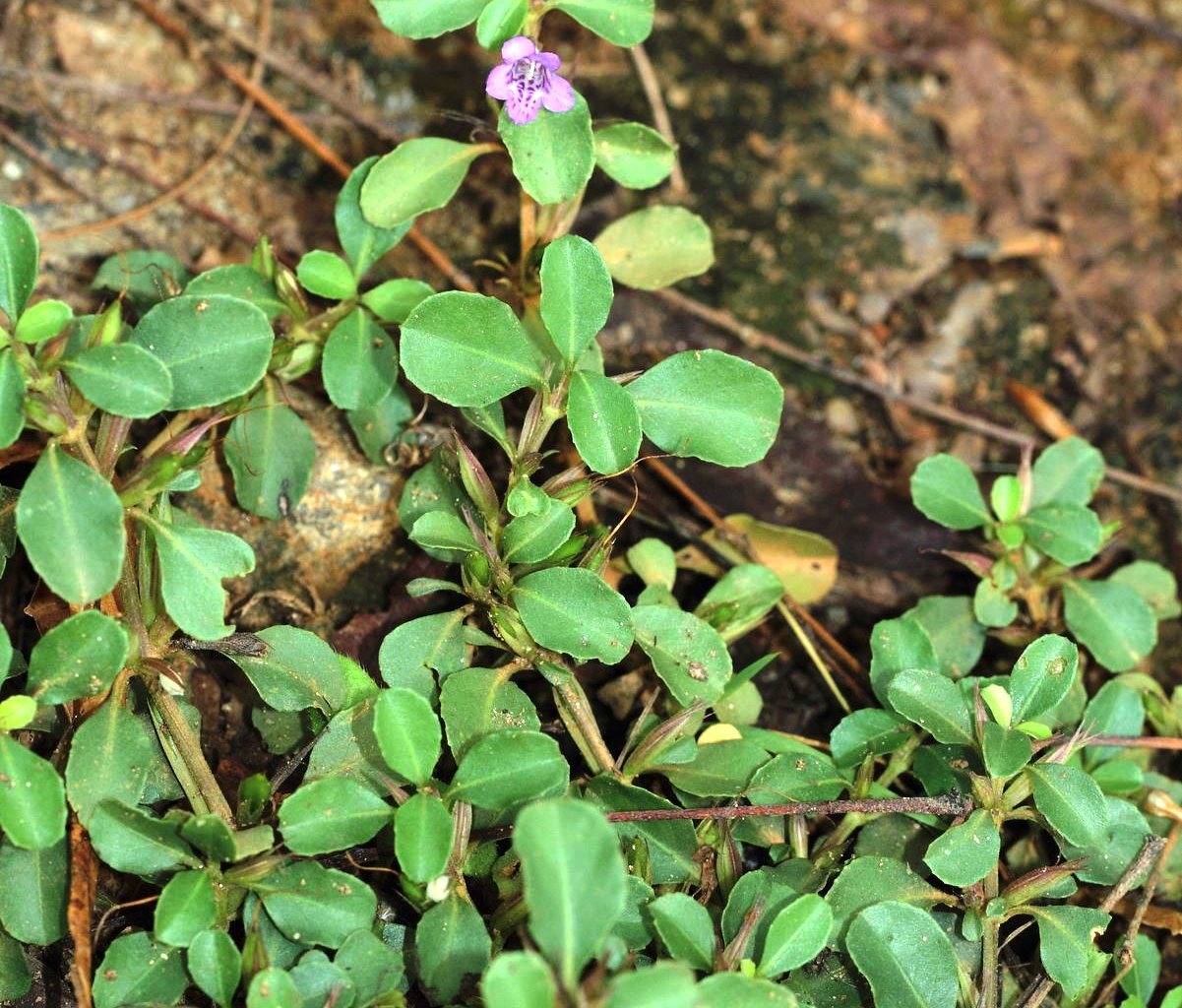Dyschoriste perrottetii

|
|
Dyschoriste perrottetii Common Names: Scientific
Classification Kingdom: Plantae Clade: Tracheophytes Clade: Angiosperms Clade: Eudicots Clade: Asterids Order: Lamiales Family: Acanthaceae Genus: Dyschoriste Species: D. perrottetii Binomial Name: Dyschoriste perrottetii (Nees) Kuntze Synonyms: Dyschoriste scariosa var. perrottetii, Dyschoriste scariosa subsp. perrottetii, Dyschoriste nagchana (Nees) Bennet Morphological Description Dyschoriste perrottetii is a small, perennial herb, typically growing 30–60 cm tall,
with a sprawling or erect habit. Key features include: · Stem: Quadrangular, hairy, green to reddish, branching at base · Leaves: Opposite, lanceolate to elliptic, 2–6 cm long, 1–2.5 cm
wide, entire margins, pubescent · Flowers: Tubular, purple to lavender, 1.5–2 cm long, in terminal or
axillary spikes, blooming June–September · Fruit: Capsule, 1–1.5 cm long, with hooked retinacula ejecting
seeds Distribution and Habitat Dyschoriste perrottetii is native to tropical Africa and parts of Asia, thriving in: · Regions: Savannas, open grasslands, disturbed areas, roadsides · Countries: Nigeria, Ghana, Sudan, Kenya, Tanzania, India, Sri Lanka · Climate: Tropical/subtropical, 25–35°C, rainfall 800–1,500 mm
annually · Soil: Sandy to loamy, well-drained, tolerates poor fertility · Elevation: Sea level to 1,200 m Ethnopharmacology Dyschoriste perrottetii is a lesser-known medicinal plant native to
parts of West Africa, particularly Nigeria, where it is used in traditional
herbal medicine. Though research on this species is limited, existing studies
and ethnobotanical knowledge highlight several important medicinal properties
attributed to its leaves and aerial parts, which contain alkaloids, flavonoids,
tannins, saponins, and other phytochemicals.Traditionally, Dyschoriste
perrottetii is used to treat respiratory infections, cough, fever, and
inflammatory conditions. It is known for its antioxidant, anti-inflammatory,
and antimicrobial properties. Some studies suggest it may also possess
analgesic effects, making it useful for pain relief. In Nigerian folk medicine,
it is often used in managing conditions like malaria, skin infections, and
sometimes gastrointestinal disorders such as diarrhea. Despite its local
medicinal importance, scientific research is still emerging, and further
studies including toxicological and pharmacological evaluations are needed to
validate its therapeutic potential and ensure safe use in modern medicine. · Anti-inflammatory: Leaf decoction is used to treats arthritis · Antimicrobial: Leaf extract has antimicrobial properties. · Antipyretic: Leaf extract is use to lowers fever. · Gastroprotective: Whole plant is use to aids digestion. ⚠ Toxicity Profile: No significant toxicity reported Additional Uses · Ornamental: Cultivated for purple flowers and lush foliage in tropical
gardens · Ecological: Stabilizes soil in disturbed areas; attracts pollinators
like bees · Fodder: Grazed by livestock in savanna regions · Cultural: Used in Nigerian rituals for healing ceremonies References/External Links More Pictures |
|
| Compounds of Dyschoriste perrottetii | |
| References |